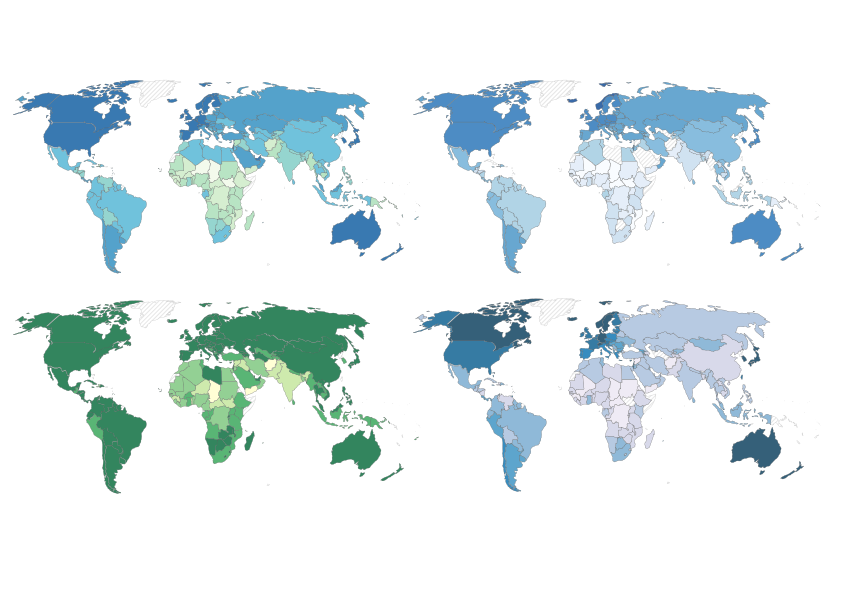Augmented Human Development Index

What you should know about this indicator
- Each of the dimensions of the AHDI is measured with four indicators: a long and healthy life is measured by life expectancy at birth, knowledge is measured by mean years of schooling; a decent standard of living is measured by GDP per capita, logarithmized to reflect that incomes become less important as they increase; and civil and political freedom is measured by Varieties of Democracy's Liberal democracy index.
- The index is then calculated by normalizing the indicators. First, the indicators are brought onto the same scale, ranging from 0 to 1. This is done by setting minimum and maximum values for each indicator, and a country at or below the minimum value receiving a score of 0, and a country at or above the maximum value receiving a score of 1.
- The minimum and maximum values for each indicator are defined as follows: Life expectancy at birth ranges between 20 and 85 years; mean years of schooling, between 0 and 15 years; GDP per capita between 100 and 47,000 international-$ at 1990 prices; and V-Dem's Liberal democracy index is already standardized between 0 and 1 (most democratic).
- The AHDI is then estimated as the geometric mean of these indices, or AHDI = (Health index * Education index * Income index * Freedom index)^(1/4).
Related research and writing
Sources and processing
This data is based on the following sources
How we process data at Our World in Data
All data and visualizations on Our World in Data rely on data sourced from one or several original data providers. Preparing this original data involves several processing steps. Depending on the data, this can include standardizing country names and world region definitions, converting units, calculating derived indicators such as per capita measures, as well as adding or adapting metadata such as the name or the description given to an indicator.
At the link below you can find a detailed description of the structure of our data pipeline, including links to all the code used to prepare data across Our World in Data.
Reuse this work
- All data produced by third-party providers and made available by Our World in Data are subject to the license terms from the original providers. Our work would not be possible without the data providers we rely on, so we ask you to always cite them appropriately (see below). This is crucial to allow data providers to continue doing their work, enhancing, maintaining and updating valuable data.
- All data, visualizations, and code produced by Our World in Data are completely open access under the Creative Commons BY license. You have the permission to use, distribute, and reproduce these in any medium, provided the source and authors are credited.
Citations
How to cite this page
To cite this page overall, including any descriptions, FAQs or explanations of the data authored by Our World in Data, please use the following citation:
“Data Page: Augmented Human Development Index”, part of the following publication: Bastian Herre and Pablo Arriagada (2023) - “The Human Development Index and related indices: what they are and what we can learn from them”. Data adapted from Leandro Prados de la Escosura. Retrieved from https://ourworldindata.org/grapher/augmented-human-development-index [online resource]How to cite this data
In-line citationIf you have limited space (e.g. in data visualizations), you can use this abbreviated in-line citation:
Leandro Prados de la Escosura (2021) – with minor processing by Our World in DataFull citation
Leandro Prados de la Escosura (2021) – with minor processing by Our World in Data. “Augmented Human Development Index” [dataset]. Leandro Prados de la Escosura, “Augmented Human Development Index (AHDI) - Country data”; Leandro Prados de la Escosura, “Augmented Human Development Index (AHDI) - Regional data” [original data]. Retrieved November 15, 2024 from https://ourworldindata.org/grapher/augmented-human-development-index




